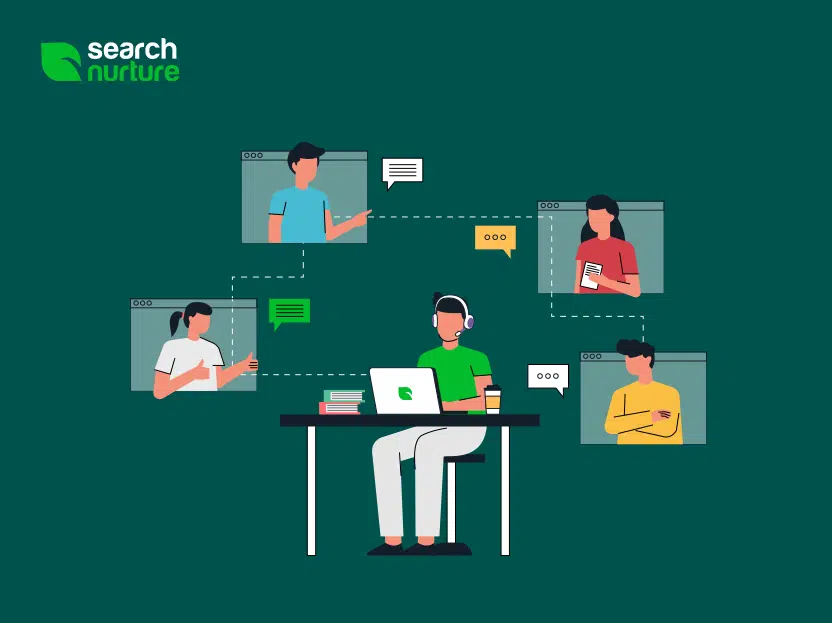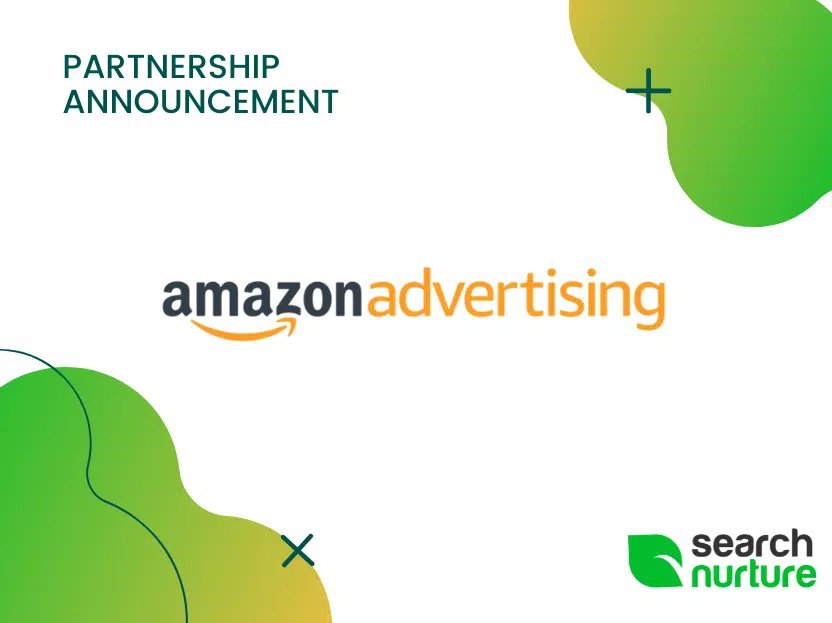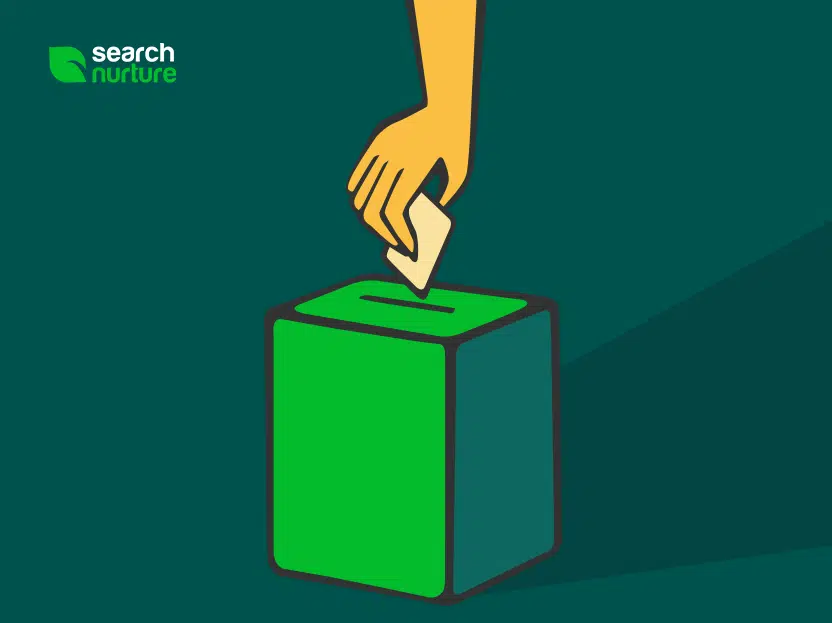Lock down, quarantine, and social distancing have changed the way business is done. Many companies have, at least temporarily, gone to working remotely. This is a big change in the way business is done. Luckily for us at Search Nurture, we were already a fully remote company. The Lockdown didn’t alter our operations or change our day to day when it comes to work. But we wanted to put together this remote work guide to share some of our keys to success.
Search Nurture is a fully remote company – we don’t have an office. As such this guide is directed to our current situation where nobody has an office. We’re grateful for being remote ready at this time and want to share some of the methods we use to maintain culture and productivity in a separated world. There are some other factors to take into consideration when you move to fully remote work. These include making people feel included and connected, but we won’t address that here.
Tech Stack:
Nothing too crazy here but we use:
- Zoom for video chatting
- Slack for messaging
- Everhour for time tracking (when needed)
- Asana for project and task management
- G suite for email and file storage
- LastPass for sharing passwords in a secure and distributed manner
How you communicate becomes very important when you are remote. If you don’t define how to use each platform, you may end up with conversations over email, files being attached over Slack, tasks being posed as casual chatter, and passwords being shared over text!
Communication Guidelines
- If the conversation is serious, or there is essential feedback, use video.
- If you are asking for a task from someone, make the task in Asana. Never ask for tasks in Slack, if you want to ping someone, share the link to the Asana task. Tasks in Slack are hard to follow, mess up people’s workflow, and often get lost.
- Files are on Google Drive. We have many shared drives so someone can share or link to a file there, but sharing files over email or Slack makes multiple versions. This requires folks to download them and makes a mess of the organization.
- Email is for formal communication. This means formal communication internal or with our clients.
- Slack is for chatter – this is for running through a quick idea, question, or discussing something. It’s also useful for double checking items on calls.
Keeping The Culture
The meetings and guidelines are crucial to keeping the teams and employees connected and social. We have a lot of meetings and use a few guidelines to help make sure they are even more effective.
Guidelines:
Video is Mandatory
Video is very very important for focus, engagement, context, and interaction! Especially when everyone is muting themselves when they aren’t talking, it helps to see their faces and reactions. When you never get to see your colleagues in person, this becomes even more important. Some people prefer not to be on video, but unless there’s a very good reason, we don’t allow that at Search Nurture. If one person isn’t on video, no one wants to be on video and calls really lose a lot of their effectiveness.
Everyone Speaks
This goes primarily for our internal meetings, of which we have a fair number of. This is important because some people are shy or may not feel confident enough to speak or just may feel run over by more talkative coworkers. We build into our meetings that everyone has a prompt to talk, even if it’s just for a few seconds. It helps build rapport, makes sure that everyone has a chance, and no one is left out. You don’t have the same body language and context clues you have in person, so a strong prompt is a must!
Casual Conversation is important
One of the biggest changes in remote communication is that in person communication is often not intentional. Remote communication, however, almost always is. The barrier of having to set up a meeting room makes it that way. This can lead to an over-correction where all communication becomes very intentional. This can cause the culture, relationships, and fun can die out of your chatter and company. To combat this we have a few meetings with built in casual chatter time, as well as a lot of fun channels we use on our slack
Flexibility and Transparency
This one can be a challenge, but we allow all of our employees flexibility with their hours, and sometimes with what they are doing on calls. Knowing that some people work from home and have children or other responsibilities, it can greatly improve their quality of life to work an extra hour or two at night after a child is asleep and use those breaks in the day to take care of them. We also allow and encourage children and pets’ presence on our zoom calls (it’s a lot of fun) and if it’s noisy they can always mute.
We also expect people to be available as necessary, so while hours are flexible, it can’t be at the detriment of meetings or team communication.
Yes, this requires you to trust all of your employees and assume that they will make up their hours if they work on a flexible schedule. No, this flexibility isn’t for everyone. We’ve found that if you give people autonomy, they rarely abuse it. We also ask for full transparency in our project management system Asana, so everyone plans their work or “tasks” in Asana, when it will be done, and if we want we can check in on it, but don’t often find the need.
Meetings and Connectivity
Our Meetings are designed to enhance connectivity between our team. Here’s a list of our standard recurring communication meetings.
Monday Meeting
We have a company wide sync every Monday in which we go through announcements, birthdays and anniversaries, and then updates by each section of the company. We’re not a huge company – so we make sure everyone has something to say when it comes to their division or clients. This is an opportunity for the whole team to interact at least once a week.
Daily Huddle
The daily huddle is a 15 minute meeting that we do at 10PST every day. It’s only 15 minutes long, and we usually let the first 5 – 8 minutes be idle chatter. Some employees join it 5 to 10 minutes early so they can get even more casual conversation going. Then everyone gives an update. This can be a request for collaboration, a quick summary of their day, a cool article, an accomplishment, a challenge, or anything really.
Weekly Syncs or 1 on 1s
Every employee has a 30 minute meeting with their direct manager once a week. This is especially important in a remote environment because if someone has a frustration brewing or something blocking their way, you may not know it. You can’t see their attitude in person. It helps build trust and keep everyone happy and productive. This meeting is about the employee first and foremost, giving them a chance to talk about whatever they want – whether it’s a challenge or something exciting.
Donuts
We use a slack plugin called donuts to group everyone into 4 or 5 person groups for a once a week purely casual conversation. This lasts for 30 minutes and helps foster casual conversation, one of the biggest challenges in remote, and also collaboration and innovation. We started with donuts pairing everyone in weekly 1 on 1 meetings, but we found it was a little too intense and sometimes awkward. The 4 to 5 person groupings make for a good mix and not too much social pressure.
Productivity
Routine
Routine is very important when working from home or everything can blend together fast and without knowing it.
- Maintaining your normal hygiene schedule and getting dressed for work is important. Yes, I still wear sweatpants most days because they are comfortable, but I definitely do my hair and wear a nice shirt.
- Have Book Ends! Book Ends is the term I use for having something to start and end your work day. Mentally if you just start your workday and end it without something to signify that it can blend in with everything else. I use a walk for at least a few blocks in the morning and the evening to signify to myself the separation of work and home life.
- I don’t separate everything though. For long calls and presentations, I have screen holders in my kitchen. That way while I’m watching I can still complete mindless chores like folding laundry or doing dishes.
- I like to keep a Google Doc chart of just a few things that if I do every day outside of work will make it successful. For me these can be: take 2 walks, work out, cook, play piano, meditate, or read. This makes sure I still do things I feel are fulfilling and healthy at a minimum and ideally don’t fall into a routine of being a couch potato. I like to keep this really simple, something like this: Routine Template.
Notifications and Messengers
- Answer Slack in batches – slack notifications are the bane of productivity, so don’t expect immediate responses. We ask that everyone mute their notifications and respond in batches every half hour or hour, whatever suits them. Otherwise, projects may never get done with constant distractions.
- We use the Google Calendar plugin as well so it automatically shows when you are in a meeting.
- Slack channels are ordered with a channel prefix for easy searchability – #fun, #client, #general, to make sure that channels are easy to find.
Project Management and Transparent Work
You don’t have to use Asana, but using a well built out and highly utilized project management platform is very important for remote work. Since there is less communication, touch bases, and visual working, there needs to be a way to be accountable for what’s getting done, who’s doing what, and when.
Project management platforms can solve all of those. They also work as a form of communication. It helps cut down on – what’s the status on this? Is this done yet? Who is it waiting on? What is this person doing? Do we have extra bandwidth?
With a properly utilized platform, this can all be answered by looking around.
We also plan our individual days in Asana in a week-long Kanban board we call a Stack. I find these improve productivity because when I go into the day I know what I need to get done, approximately how long each item will take, and it motivates me to close out the day with everything done and a sense of accomplishment.




